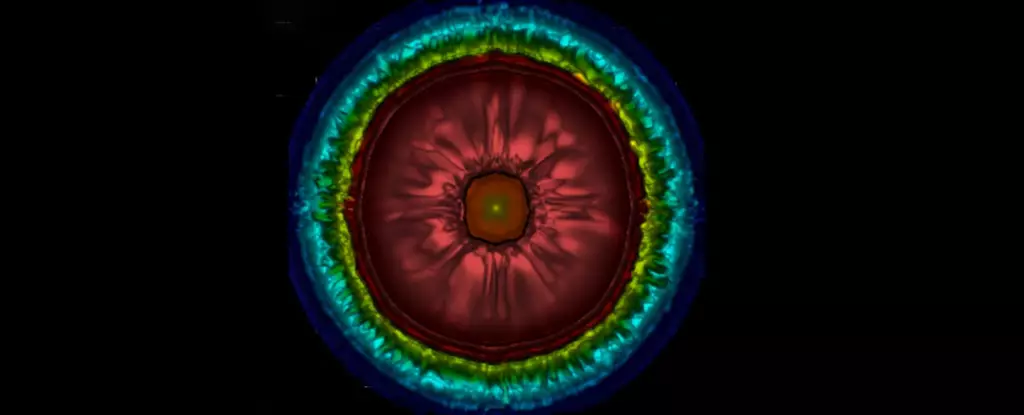When the largest stars in the Universe exhaust their fuel, they undergo a cataclysmic event known as a supernova. Typically, these explosions result in the formation of a neutron star, black hole, or total vaporization. However, there exists a class of supernovae called exotic supernovae, which defy traditional understanding due to their rarity and exceptional luminosity. Seeking to shed light on the dynamics of these enigmatic phenomena, a team of astronomers harnessed the power of supercomputers to embark on the first-ever high-definition, 3D hydrodynamic simulation of exotic supernovae. In a landmark research effort led by Ke-Jung Chen at Academia Sinica Institute of Astronomy and Astrophysics (ASIAA) in Taiwan, scientists used supercomputers at the Lawrence Berkeley National Laboratory and the National Astronomical Observatory of Japan to unravel the secrets of these extraordinary cosmic events. Their groundbreaking findings were published in The Astrophysical Journal.
Scientists have long possessed a comprehensive understanding of regular supernovae, enabling them to model and comprehend the intricacies of these stellar explosions. However, recent large-scale supernova observations have revealed the existence of extraordinary types of cosmic explosions. These exotic supernovae challenge and overturn previous knowledge of supernova physics. Among these exceptional events are superluminous supernovae, which shine approximately 100 times brighter than regular supernovae, maintaining their brilliance for prolonged periods that can span several years. Additionally, some exotic supernovae display irregular variations in brightness. The key suspects for these rare events are stars with masses ranging from 80 to 140 times that of the Sun. By delving into the mysteries surrounding exotic supernovae, scientists hope to gain insights into the evolution of the most massive stars in the universe.
Beyond One-Dimensional Simulations
Understanding the mechanisms that drive these colossal explosions poses a daunting challenge. Until now, models of exotic supernovae had been largely confined to one-dimensional simulations. However, leveraging cutting-edge supercomputer simulations and millions of hours of computing time, Chen and the international research team were able to delve into the turbulent structures within the core of an exotic supernova explosion. These turbulent structures, resulting from irregular fluid motion, play a pivotal role in the explosive process of supernovae. They mix and distort matter, influencing the release and transfer of energy, ultimately shaping the overall brightness and appearance of the supernova.
While this breakthrough simulation represents a significant step forward, the team asserts that further research is necessary to deepen our understanding of exotic supernovae. The advent of next-generation supernova survey projects, such as the Vera Rubin Telescope in Chile, is expected to detect a greater number of these elusive events. The telescope is poised to discover three to four million supernovae over its ten-year survey period, spanning a wide range of distances. In addition, other wide-field near-infrared missions, including the Nancy Grace Roman Space Telescope and Euclid, hold the promise of unveiling more of these extraordinary cosmic occurrences. By harnessing the power of computer simulation and modeling, scientists aim to unlock the mysteries surrounding the demise of exceedingly massive stars, further enhancing our comprehension of their journey to extinction.
The pioneering work conducted by Ke-Jung Chen and the international team of astronomers represents a significant leap forward in unraveling the complexities of exotic supernovae. Through the employment of state-of-the-art supercomputers and extensive computing time, they ventured beyond traditional one-dimensional simulations, shedding light on the role of turbulence within these extraordinary cosmic explosions. As next-generation telescopes and missions come online, the promise of further discoveries in the realm of exotic supernovae looms on the horizon. With each advancement in computer simulation, our understanding of the deaths of the most massive stars in the universe inches closer to the ultimate truth.


Leave a Reply